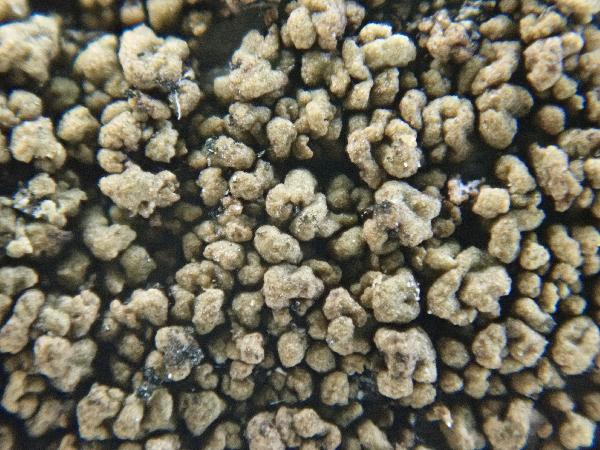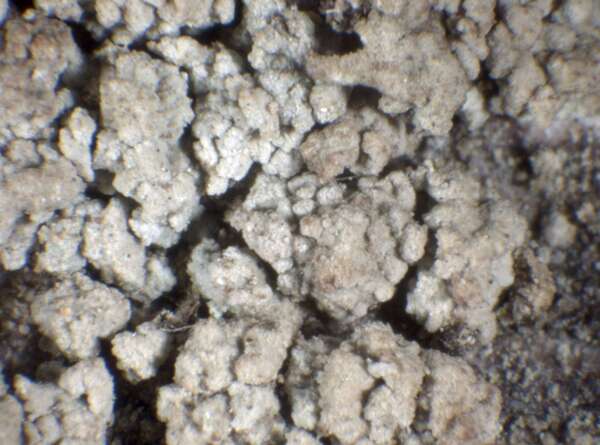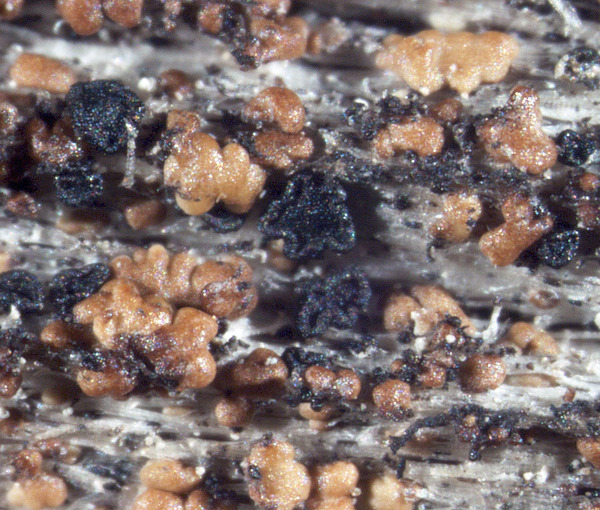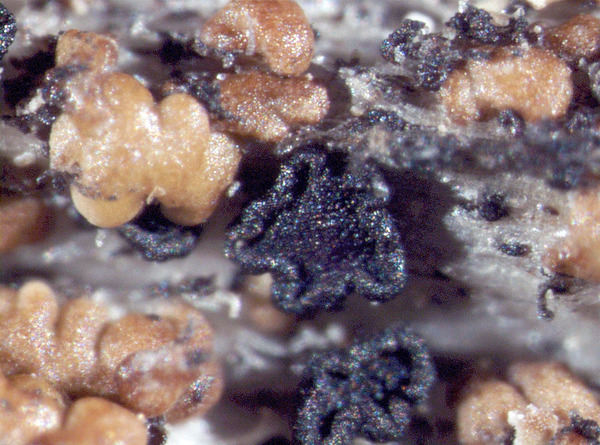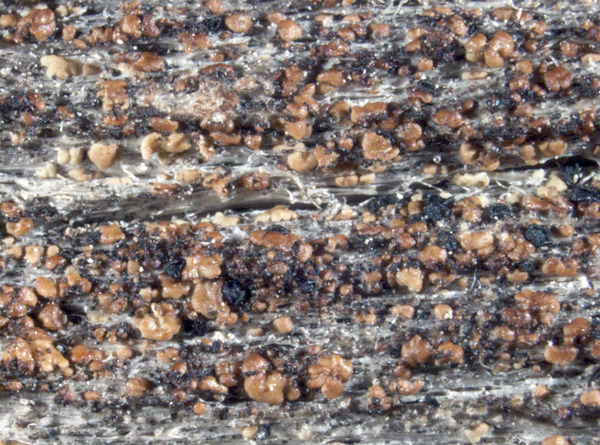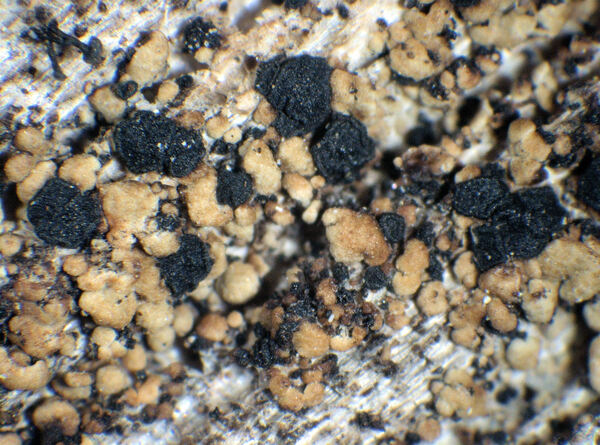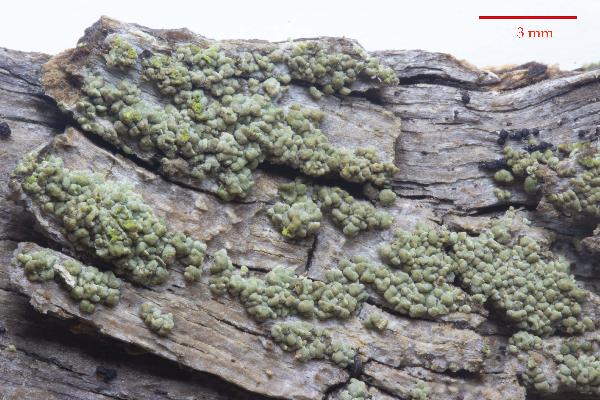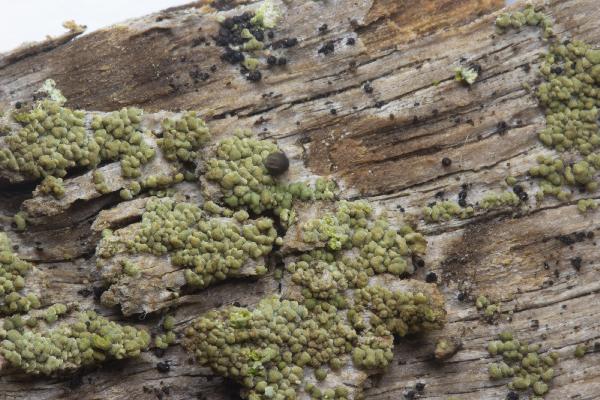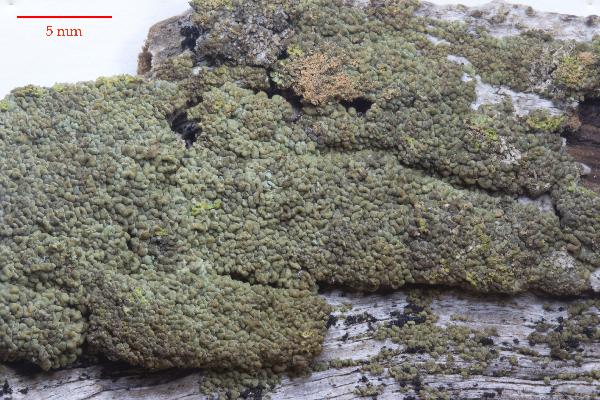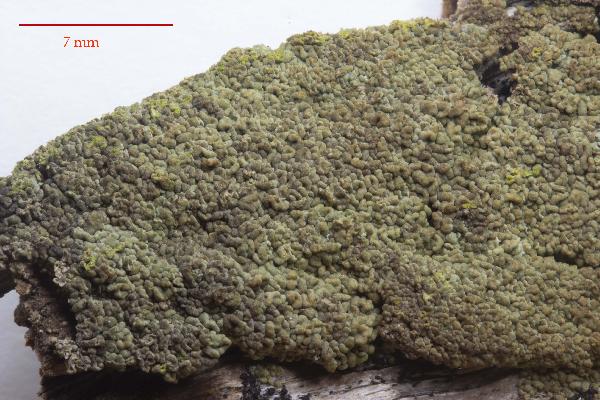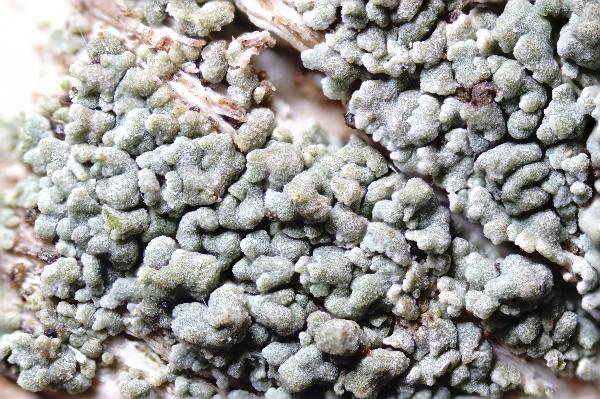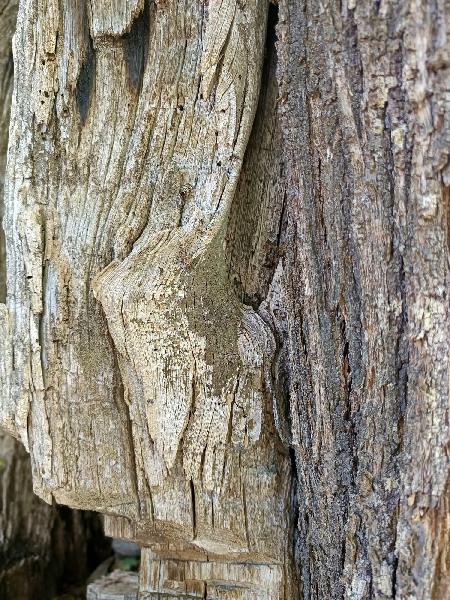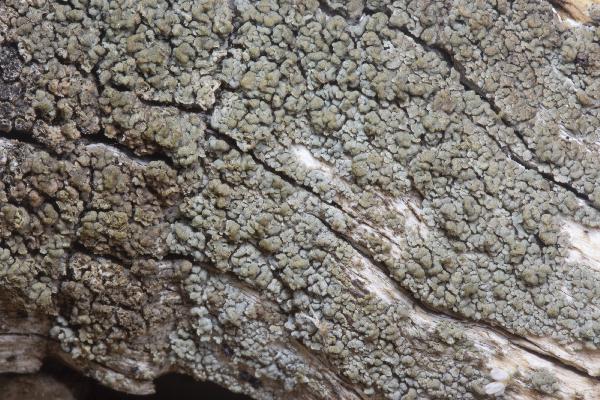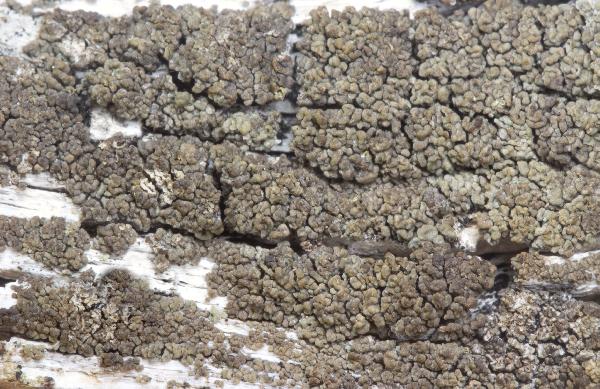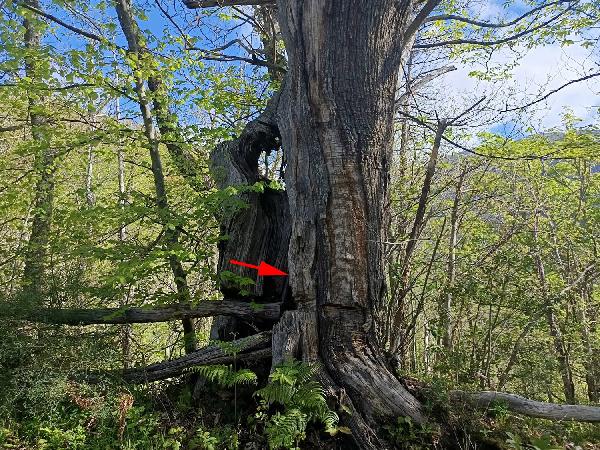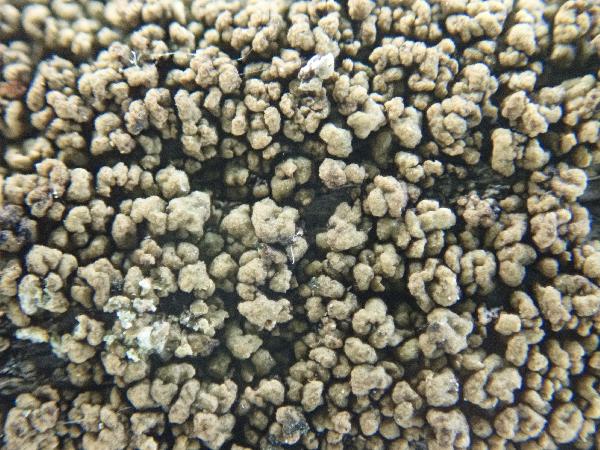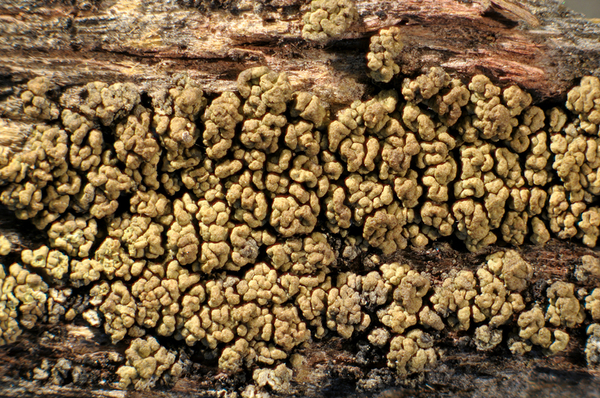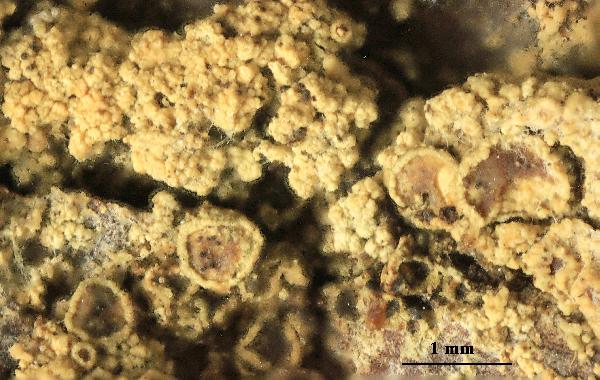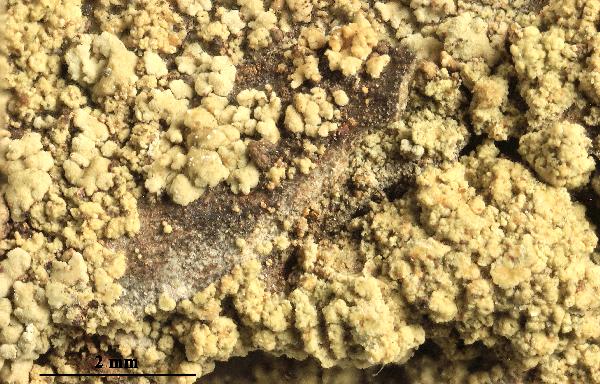Xylopsora caradocensis (Nyl.) Bendiksby & Timdal
Taxon, 62: 953, 2013. Basionym: Lecidea caradocensis Leight. ex Nyl. - Act. Soc. Linn. Bordeaux, 21: 383, 1857.
Synonyms: Bilimbia caradocensis (Nyl.) A.L. Sm.; Hypocenomyce caradocensis (Nyl.) P. James & Gotth. Schneid.; Lecidea acutula Nyl.; Psora acutula (Nyl.) Walt. Watson; Psora caradocensis (Nyl.) Mudd; Toninia caradocensis (Nyl.) J. Lahm
Description: Thallus squamulose, the squamules up to 1(-1.5) mm wide, adnate, bullate or ascending, grey green to dark brown, dull, crenulate or incised. Upper cortex of thin-walled hyphae, up to 30 µm thick, including and up to 20 µm thick epinecral layer; lower cortex absent. Apothecia lecideine, up to 0.5(-0.8) mm across, marginal or laminal, with a black, flat, epruinose, sometimes gyrose disc, and a prominent, persisting, more or less flexuose proper margin. Proper exciple of closely conglutinated hyphae, brownish black in outer part, dark brown within, N-; epithecium dark brown, N-; hymenium colourless, 40-50 µm high; paraphyses short-celled, sparingly branched and anastomosing, the apical cells hardly swollen; hypothecium pale brown in young apothecia, later turning dark brown. Asci 8-spored, narrowly rhombic, with an apical amyloid cap and a small, amyloid tholus containing a non-amyloid central plug. Ascospores 1-celled to 1(-3)-septate, hyaline, narrowly ellipsoid to fusiform, (5-)7-12(-15) x 2-5 µm. Pycnidia black, sessile, with a brown wall, N-. Conidia simple, hyaline, narrowly ellipsoid, 2.5-5 x c. 1.2 µm. Spot tests: upper cortex and medulla K-, C-, KC-, P-; cortex UV-, medulla UV+ faintly white. Chemistry: friesiic acid in the medulla.
Growth form: Squamulose
Photobiont: green algae other than Trentepohlia
Reproductive strategy: mainly sexual
Commonnes-rarity: (info)
Alpine belt: absent
Subalpine belt: very rare
Montane belt: very rare
Dry submediterranean belt: absent
Humid submediterranean belt: absent
Padanian area: absent
pH of the substrata:
1 2 3 4 5
Solar irradiation:
1 2 3 4 5
Aridity:
1 2 3 4 5
Eutrophication:
1 2 3 4 5
Poleotolerance:
0 1 2 3
Altitudinal distribution:
1 2 3 4 5 6
Rarity
absent
extremely rare
very rare
rare
rather rare
rather common
common
very common
extremely common
Loading data...
Occurrence data
Predictive map
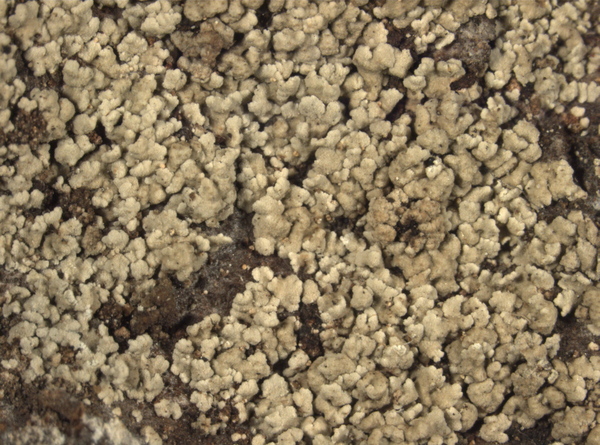
E. Pittao; Owner: Department of Life Sciences, University of Trieste
Herbarium: TSB (TSB 23468)
20.10.2009
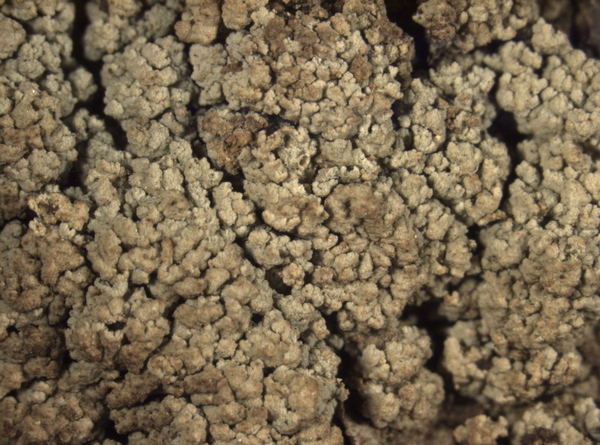
E. Pittao; Owner: Department of Life Sciences, University of Trieste
Herbarium: TSB (TSB 23468)
20.10.2009
Growth form: Squamulose
Photobiont: green algae other than Trentepohlia
Reproductive strategy: mainly sexual
Commonnes-rarity: (info)
Alpine belt: absent
Subalpine belt: very rare
Montane belt: very rare
Dry submediterranean belt: absent
Humid submediterranean belt: absent
Padanian area: absent
pH of the substrata:
| 1 | 2 | 3 | 4 | 5 |
Solar irradiation:
| 1 | 2 | 3 | 4 | 5 |
Aridity:
| 1 | 2 | 3 | 4 | 5 |
Eutrophication:
| 1 | 2 | 3 | 4 | 5 |
Poleotolerance:
| 0 | 1 | 2 | 3 |
Altitudinal distribution:
| 1 | 2 | 3 | 4 | 5 | 6 |
Rarity
absent
extremely rare
very rare
rare
rather rare
rather common
common
very common
extremely common
Loading data...
Occurrence data
Predictive map

E. Pittao; Owner: Department of Life Sciences, University of Trieste
Herbarium: TSB (TSB 23468)
20.10.2009



